Making Color Strategies Work For You
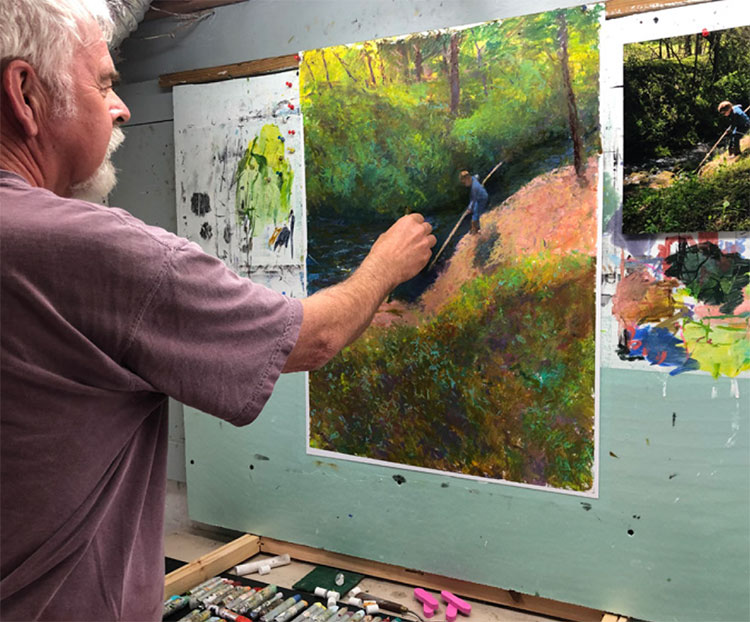 I confess I am not an expert at color theory, elaborate color wheels, or the science of color and optics. My training in color theory was minimal in art school. I suspect that many artists had a similar experience. We looked at famous paintings, learned surface knowledge of complementary colors, and the very basics of mixing paint. At that point, we were turned loose like lions who were never taught to hunt.
I confess I am not an expert at color theory, elaborate color wheels, or the science of color and optics. My training in color theory was minimal in art school. I suspect that many artists had a similar experience. We looked at famous paintings, learned surface knowledge of complementary colors, and the very basics of mixing paint. At that point, we were turned loose like lions who were never taught to hunt.
Self Portrait
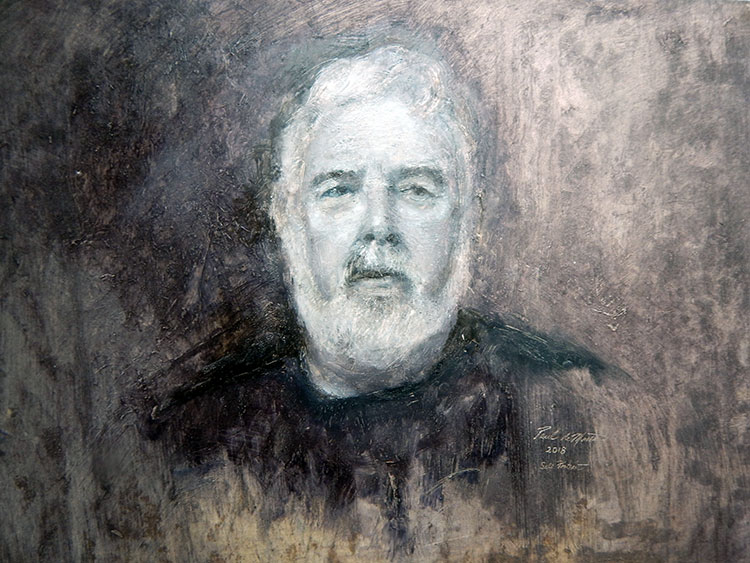 Throughout art history, artists have used the self portrait as a way to test their skills, to examine themselves and their lives, and to try out new techniques. An artist can take his or her time and do not have pressures to please anyone other than themselves. For me, doing a self portrait is an examination of the passing of time. I wanted to try out some new ideas I have been exploring with my oil sticks along the way. Self portraits are a fun challenge!
Throughout art history, artists have used the self portrait as a way to test their skills, to examine themselves and their lives, and to try out new techniques. An artist can take his or her time and do not have pressures to please anyone other than themselves. For me, doing a self portrait is an examination of the passing of time. I wanted to try out some new ideas I have been exploring with my oil sticks along the way. Self portraits are a fun challenge!
The Diana Fritillary and Me
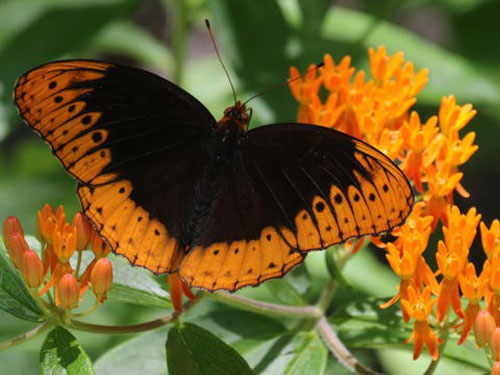 My father got me interested in butterflies at about age 6. My mom made me a butterfly net from a broom handle, a bent coat hanger and some sheer fabric and off I went. Dad would take me out to special fields and we would have a great time. He got me a thin little Simon and Shuster book on butterflies and moths and it had a picture of a male Diana Fritillary. As I got older, we took butterfly hunting trips further south from Pittsburgh, through West Virginia into Tennessee. We never saw a Diana. Many years later after my father had passed away, I was in the Smoky Mountain National Park and noticed several large peculiar black butterflies on some Joe Pye Weed. They were female Diana Fritillaries! I was stunned and sad that my dad was not there to share this magical moment of discovery. After two or three decades of searching, I had finally seen a Diana!
My father got me interested in butterflies at about age 6. My mom made me a butterfly net from a broom handle, a bent coat hanger and some sheer fabric and off I went. Dad would take me out to special fields and we would have a great time. He got me a thin little Simon and Shuster book on butterflies and moths and it had a picture of a male Diana Fritillary. As I got older, we took butterfly hunting trips further south from Pittsburgh, through West Virginia into Tennessee. We never saw a Diana. Many years later after my father had passed away, I was in the Smoky Mountain National Park and noticed several large peculiar black butterflies on some Joe Pye Weed. They were female Diana Fritillaries! I was stunned and sad that my dad was not there to share this magical moment of discovery. After two or three decades of searching, I had finally seen a Diana!
A Pathway to Strong Composition
 Composition is something that was not stressed much in art school. You don't see much written about it anywhere. It's as if it is some weird science that few seem interested in. I think composition is what makes one painting a 'winner' and another one a ho hummer that is easily passed by. Any talk of 'rules' nowadays is a sure bet to cause yawns and glances at smart phones. I dislike the word rule anyway. Rules are simply ideas and there is no problem breaking them or following them when it seems appropriate.
Composition is something that was not stressed much in art school. You don't see much written about it anywhere. It's as if it is some weird science that few seem interested in. I think composition is what makes one painting a 'winner' and another one a ho hummer that is easily passed by. Any talk of 'rules' nowadays is a sure bet to cause yawns and glances at smart phones. I dislike the word rule anyway. Rules are simply ideas and there is no problem breaking them or following them when it seems appropriate.
Reflecting on Reflections
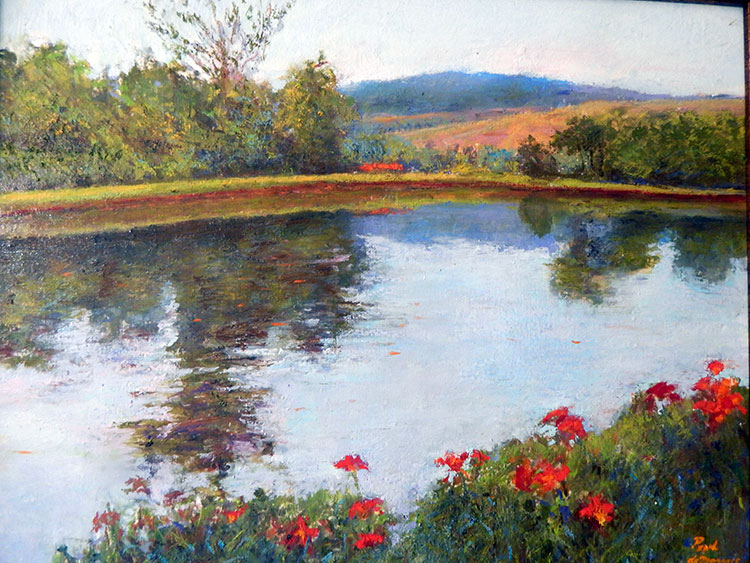 There is something magical about a reflection. Reflections have always fascinated me. It's as if there is another dimension down in the water, another world that we can glimpse but cannot enter. In landscape painting, reflections can add a great deal to a painting. I find that many beginning artists struggle with reflections and lack some of the basic ideas that can help improve the illusion of a believable reflection.
There is something magical about a reflection. Reflections have always fascinated me. It's as if there is another dimension down in the water, another world that we can glimpse but cannot enter. In landscape painting, reflections can add a great deal to a painting. I find that many beginning artists struggle with reflections and lack some of the basic ideas that can help improve the illusion of a believable reflection.
Field of Dreams
 I've always been a 'field' person. I love the long views we have in Tenn with the blue mountains protecting our perimeter. The woods are dark and forbidding to a guy with no sense of direction and I get very claustrophobic driving into the mountain 'hollers' we have here. Give me an open field where I can walk, see lots of nature and where I can hear the meadowlarks and see the vultures circling high in the warm air currents.
I've always been a 'field' person. I love the long views we have in Tenn with the blue mountains protecting our perimeter. The woods are dark and forbidding to a guy with no sense of direction and I get very claustrophobic driving into the mountain 'hollers' we have here. Give me an open field where I can walk, see lots of nature and where I can hear the meadowlarks and see the vultures circling high in the warm air currents.
Reflections on Painting Lily
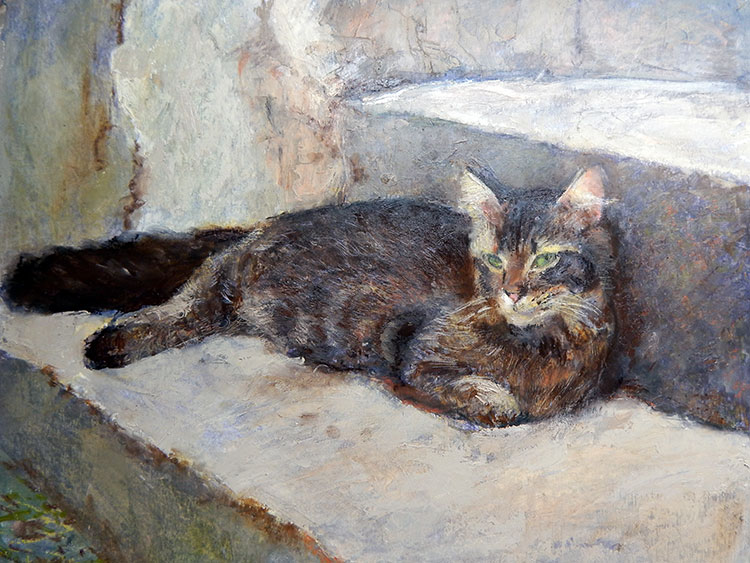 I view my progression in painting to climbing a giant never ending stairway. At first, consistent focus will move you rapidly up the stairs. As a veteran painter, it has become more difficult to reach the next step. It can be frustrating waiting for a ‘jump’ in skill that manifests itself in a painting you are working on. This painting of my cat Lily is one of those paintings that produced gains in areas I had been focusing on during the last couple of years. Painting, to me is a visual result of ideas. I believe it is ideas that produce technique that ultimately produces the image an artist seeks. I am constantly trying out new ideas in my painting. Teaching also inspires me to test my ideas and to head off in directions I might glean from working with art students. We are ALL art students and will be our entire lives. In this blog I will explore some of the ideas involved in my painting of Lily.
I view my progression in painting to climbing a giant never ending stairway. At first, consistent focus will move you rapidly up the stairs. As a veteran painter, it has become more difficult to reach the next step. It can be frustrating waiting for a ‘jump’ in skill that manifests itself in a painting you are working on. This painting of my cat Lily is one of those paintings that produced gains in areas I had been focusing on during the last couple of years. Painting, to me is a visual result of ideas. I believe it is ideas that produce technique that ultimately produces the image an artist seeks. I am constantly trying out new ideas in my painting. Teaching also inspires me to test my ideas and to head off in directions I might glean from working with art students. We are ALL art students and will be our entire lives. In this blog I will explore some of the ideas involved in my painting of Lily.

